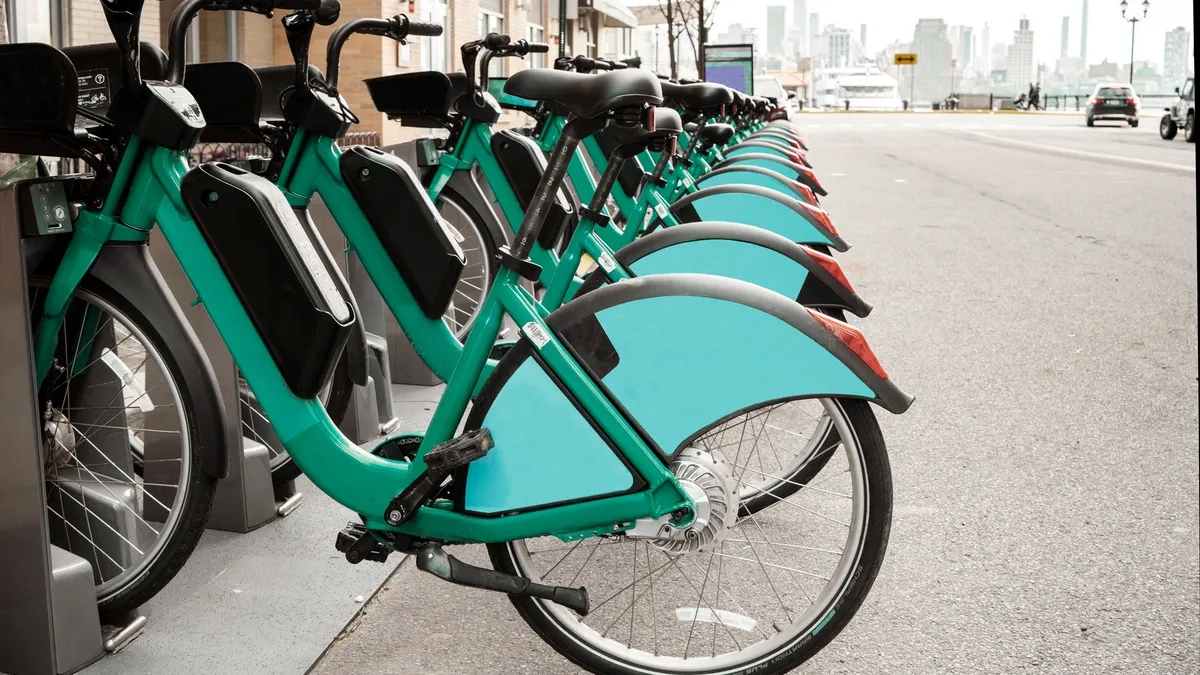Dive Brief:
-
Shared micromobility ridership in the U.S. nearly recovered to pre-pandemic levels in 2021, according to a report last week by the National Association of City Transportation Officials.
-
People using station-based bikes, dockless bikes and dockless e-scooters in the U.S. last year took about 112 million trips, nearly doubling 2020’s ridership of 65 million trips. Shared micromobility ridership was about 136 million trips in 2019.
-
Shared micromobility’s ongoing recovery and growth are signs that people have permanently adjusted their travel behavior, according to NACTO Executive Director Corinne Kisner. “Shared bikes and e-scooters are embedded within the day-to-day lives of millions of people,” Kisner said in a statement.
Dive Insight:
Station-based bikes and dockless shared e-scooters accounted for almost all trips, with dockless bikes the source of just 2.5 million trips in 2021. Dockless bikes “have become much less common” in recent years due, in part, to mergers and acquisitions in the private sector, the report says.
Ridership of dockless bikes and e-scooters declined 64% from 2019 to 2020, but ridership of station-based bikes fell just 24% during the same period, the report states. Likewise, ridership on station-based bikes rebounded more than dockless bikes and e-scooters, reaching 18% over pre-pandemic levels in 2021. In comparison, dockless bike and e-scooter use remained 27% lower in 2021 than in 2019.
E-scooters remain more popular than bikes
NACTO attributes the relative strength of station-based bike use to greater support from local governments.
“Strong partnerships between cities and operators ensured consistent availability of devices throughout the pandemic, and cities continued to invest in station-based systems,” the report says.
In addition, many station-based systems have added e-bikes in recent years “to provide faster trips for a broader range of riders,” the report says.
“Shared e-bike trips nearly doubled from 9.5 million in 2018 to 17 million in 2021. The growth in shared e-bike trips can be almost entirely attributed to the adoption of e-bikes in station-based systems,” the report says.
People have also adjusted their travel patterns since the pandemic started, with fewer trips occurring during the morning rush hour and more trips taking place throughout the day. Hybrid work schedules, more remote workers and greater use of shared micromobility services are among the possible causes for the shift, according to NACTO.
Ridership has grown even as prices for shared mobility services have risen “substantially” since 2018, “especially in systems where prices are not regulated by the city,” the report says.
“Trip costs for e-scooters and e-bikes have more than doubled since 2018, from an average of $3.50 in 2018 to around $7 for a similar trip in 2021,” NACTO said in the report. “Prices for non-electric station-based bike share trips also increased, although less dramatically than dockless systems.”












